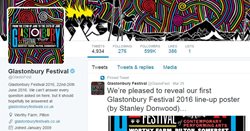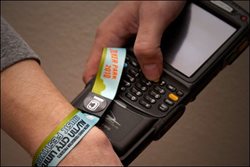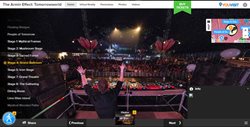Festivals have always been a place for people to get together and enjoy the music, and with a huge selection of festivals targeted at different age groups and showcasing different genres of music there is something for everyone. The main marketing focus is usually on getting the word out online through social media and to get people talking about the event. Using images and videos from previous years, hashtags and interaction all help to create a buzz.
Below are different ways that some of the biggest festivals market themselves to the millennial generation:
Campaigns
This year, Glastonbury has run a major campaign to stop festival goers peeing on the land at the farm. To enter the ‘Don’t Pee’ campaign individuals were required to design a logo to discourage people from peeing on the land. The aim is that with the logo, more urinals and better signage people at the festival will use the toilets instead of the land. With the prize of free tickets, the campaign encourages individuals who want to go to the festival to get involved and get creative.
Boardmasters have a campaign to give smaller, local artists the chance to perform at the well-known festival in Cornwall. The campaign is being run on the Boardmasters Facebook page and so is reaching the targeted millennial audience. To enter you must upload a video showing your band or artist in action. The public vote for their favourite and the 4 with the most votes will be in the final, along with 1 wild card. One artist will be able to live their dream and perform at the festival. To vote in the Battle of the Bands you have to like the Boardmasters Facebook page, which helps to get more people following the festival to see news and updates.

Promotional Videos
What better way to promote your event than using footage of the event in full swing. Tomorrowland tend to create an ‘official after movie’ to promote the next festival and each year the videos are hugely successful. The 2014 video has had over 48 million views and over 290,000 likes. Letting people see what has happened in previous years shows what they have missed and helps to get them interested in going in the future.
Social media
A lot of festivals are active across a number of social media platforms as this gives them an efficient and effective way to communicate with their target audience giving news, updates and information about the event.
Glastonbury Festival is a great example of successfully using different social media channels to create an ongoing marketing campaign. They have over 590K followers on their main Twitter account, 91.8K on Instagram and over 730K likes on Facebook. In the run up to the festival they post updates about the line-up, ticket resales, news and progress. This helps the festival stay in the forefront of people’s minds and keeps up interaction for months before the actual event.

The Big Issue = FOMO (the fear of missing out)
With constant social updates and online communication, young adults are constantly up to date with what their friends are doing by sharing in real time through social media. Social media activity is a great way for companies to promote and get people interacting with their brands. Many festivals now feature giant social media screens around the grounds showing Facebook updates and tweets from individuals who have used a specific hashtag, for example at Lollapalooza 2014, VH1 encouraged people to use #BestLollaEver to get their tweet shown on the big screen. This results in brand advertising not only throughout the festival but also across social media by encouraging discussions and interaction.
Wearable Technology
With the recent hype in wearable technology a number of festivals have swapped paper tickets for wristbands which can be used for entry, payment and connecting to social media.
The wristbands at Tomorrowland allow people to connect with one another by pressing a button on the bracelet. The individuals each receive an email linking to each other’s Facebook account so they can become Facebook friends later on. This is a big plus for the social generation at these festivals, especially when your phones run out of battery or there’s no signal!

Pre-Paid Smart Cards
Another way Festivals are advancing and making life simpler is by introducing pre-paid smart cards. This means that people don’t have to risk taking large amounts of cash with them and only have to carry round their smart card and helps to simplify merchandise transactions. Festival organisers have found that users tend to spend significantly more as it’s not ‘real’ money, good for them but bad for us!
Experience through Virtual Reality
Virtual reality could be the perfect way to experience a festival if you missed out on tickets, or to re-visit the festival when it’s over.
Tomorrowworld teamed up with the virtual tour company YouVisit in an attempt to extend the festival with an interactive video of the event. A customized camera rig of multiple DSLR cameras was set up with the ability to capture high-res photos with 360 degree rotation. This means that fans at home can experience the festival through their computers by dragging their mouse around every stage, campground, art exhibit and some of the other exciting activities that took place. This let fans experience the festival on a personal level, even if they did not attend. You can experience the festival for yourself here.

Apps
Nowadays there are pretty much apps for everything, festivals included. Many festivals have their own apps to help festival goers plan their visit, view the line-up, see maps of the area and find out important information. For example Reading and Leeds festival has an app which was released last year and Bestival creates a new app each year.
As well as specific festival apps there are hundreds of useful apps targeted at festival goers to help make your festival experience that little bit easier. One of my favourites is Tent Finder. It uses GPS to allow you to mark where your tent is on a map and when you leave, it’ll guide you back using an arrow on the map. Other more general apps such as Festival Flash and Festvl give information about different line-ups and allow you to discover new festivals you may not have previously heard of.
With festivals becoming the breeding ground for the implementation of brand new technology and millennials being the social generation constantly experimenting with the new technology the two go pretty well together. In the future I’m sure we’ll see technology being used to market to millennials playing an increasingly important role in the festival experience.